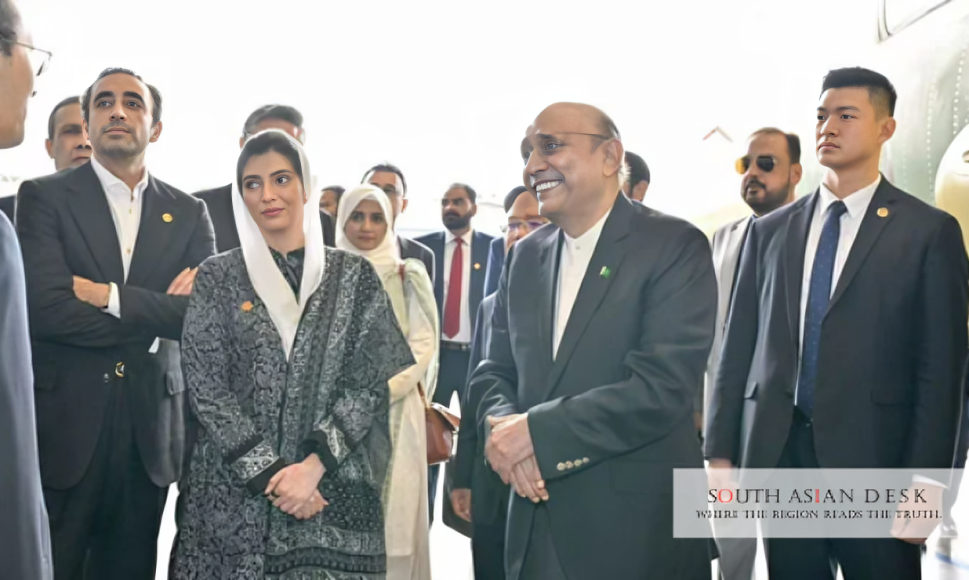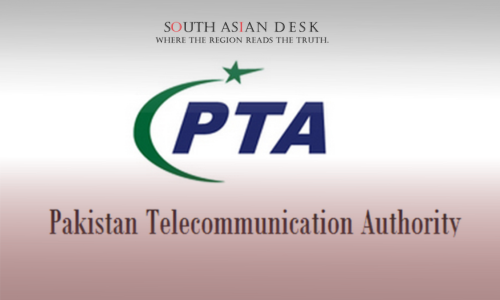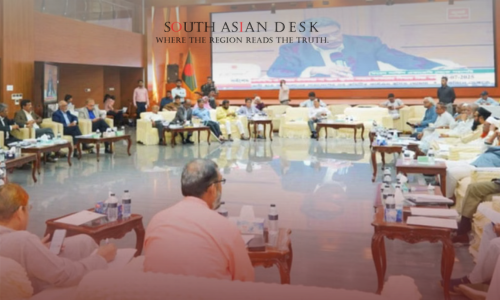President Zardari China visit started from Thursday, 12 September, 2025, to Sunday, 21 September, 2025, across Chengdu, Shanghai, and Kashgar, aimed at bolstering economic and defence ties through high-level meetings, facility tours, and memorandum signings to enhance bilateral strategic partnership amid regional challenges.
In South Asia’s volatile geopolitical arena, the President Zardari China visit underscores Pakistan’s pivot towards deepened economic and defence ties with Beijing, potentially stabilising its economy through infrastructure investments and fortifying military capabilities against border threats, while advancing the China-Pakistan Economic Corridor (CPEC) to foster regional connectivity and growth.
President Zardari China Visit: Itinerary and Key Engagements
The President Zardari China visit commenced on Thursday, 12 September, 2025, when President Zardari arrived in Chengdu, the capital of Sichuan province, upon invitation from the Chinese government. He was received by senior Chinese officials, including representatives from the local administration. According to the Ministry of Foreign Affairs of Pakistan, the itinerary was designed to further deepen the All-Weather Strategic Cooperative Partnership between the two nations.
Over the subsequent days, the President engaged in a series of targeted interactions. On Sunday, 14 September, 2025, he travelled to Shanghai, where he was warmly welcomed by Mr Chen Qun, Vice Chairman of the Chinese People’s Political Consultative Conference (CPPCC) Shanghai Committee, and Ms Ma Yinghui, Director General of the Foreign Affairs Office. According to the Office of the President of Pakistan, these engagements focused on exploring avenues for enhanced trade and investment.
A highlight of the President Zardari China visit occurred in Chengdu, where President Zardari became the first foreign head of state to tour the Aviation Industry Corporation of China (AVIC) aircraft complex. During the visit, he received briefings on advanced aerospace technologies, including the J-10 fighter jet, the co-produced JF-17 Thunder, the J-20 stealth aircraft, unmanned aerial vehicles (UAVs), and multi-domain command-and-control systems. President Zardari lauded the J-10 and JF-17’s contributions to strengthening the Pakistan Air Force and hailed AVIC as a symbol of China’s technological progress and the enduring Pak-China strategic partnership.
The itinerary extended to Xinjiang Uyghur Autonomous Region, with a stop in Kashgar on Saturday, 20 September, 2025. There, President Zardari visited the historic Etigar Mosque, where he offered Asr prayers and admired its architectural heritage. According to the Office of the President of Pakistan, this cultural engagement reflected the shared commitment to mutual understanding and stronger ties between Pakistan and China. Later that day, he toured the Kashgar Free Trade Zone, a pivotal trade and logistics hub, to discuss opportunities for expanded commerce.
Economic Milestones from the Zardari China Visit
The Zardari China visit yielded tangible outcomes in economic cooperation, aligning with broader goals under CPEC. Six memorandums of understanding (MoUs) were signed between the Sindh government and Chinese business-to-business (B2B) partners, covering sectors such as agriculture, energy, rail links, and farmer training programmes. These agreements, initially focused on Sindh, are slated for extension to other provinces, promising enhanced agricultural productivity and energy security.
According to the Press Information Department (PID) of Pakistan, the visit emphasised people-centred growth, particularly in agriculture and livestock sectors. Post-visit, on Friday, 26 September, 2025, Chinese Consul General in Karachi, Mr Yang Yundong, called on President Zardari to congratulate him on the trip’s success. The President welcomed the launch of CPEC Phase-II, stating it would boost agricultural, livestock, and socio-economic development.
From the Chinese perspective, Foreign Ministry Spokesperson Lin Jian, during a regular press conference on Monday, 15 September, 2025, noted that President Zardari had pledged stronger cooperation with China on defence production while highlighting mutual interests in economic partnerships. These economic and defence ties are expected to channel investments into Pakistan’s infrastructure, potentially exceeding USD 5 billion in the coming years, though exact figures remain subject to final negotiations.
Advancing Defence Cooperation
Defence emerged as a cornerstone of the Zardari China visit, with potential for groundbreaking procurements. At the AVIC facility, discussions centred on acquiring advanced technologies, including the J-20 stealth fighter and integrated command systems, to modernise Pakistan’s defence arsenal. Senator Saleem Mandviwala, speaking at a press conference at the Presidency on Friday, 26 September, 2025, stated: “This visit could pave the way for future agreements for the procurement of advanced defence technologies from China.”
Mandviwala further elaborated that the Zardari China visit had “deepened strategic cooperation, expanded economic partnerships, and opened new avenues of bilateral collaboration between the two countries in diverse sectors.” He highlighted Beijing’s possession of highly advanced defence capabilities that could significantly benefit Pakistan’s security posture.
The Ministry of Foreign Affairs of Pakistan, in a curtain-raiser statement ahead of the trip, outlined that the engagements would reinforce defence-industrial collaboration, building on existing joint ventures like the JF-17 programme. This aligns with President Zardari’s second official visit to China since assuming office in 2024, marking a consistent push for robust economic and defence ties.
Background
Pakistan and China have maintained an “all-weather” friendship since establishing diplomatic relations in 1951, evolving into comprehensive strategic cooperation by 2015 through CPEC. Valued at over USD 62 billion, CPEC has already delivered ports, highways, and power plants, but Phase-II aims to diversify into agriculture and industrial zones. The Zardari China visit builds on this foundation, addressing Pakistan’s economic challenges such as a PKR 28 trillion debt burden and defence needs amid tensions with India.
What’s Next for Pak-China Relations
Following the Zardari China visit, implementation of the signed MoUs will commence, with joint working groups tasked to oversee projects in energy and rail connectivity. Diplomatic follow-ups, including potential high-level exchanges, are anticipated to materialise the defence procurement deals, further solidifying economic and defence ties.
In conclusion, the President Zardari China visit not only reaffirmed longstanding alliances but also charted a course for transformative economic and defence ties, positioning Pakistan for sustained regional influence.
Published in SouthAsianDesk, September 27th, 2025
Follow SouthAsianDesk on X, Instagram, and Facebook for insights on business and current affairs from across South Asia.






